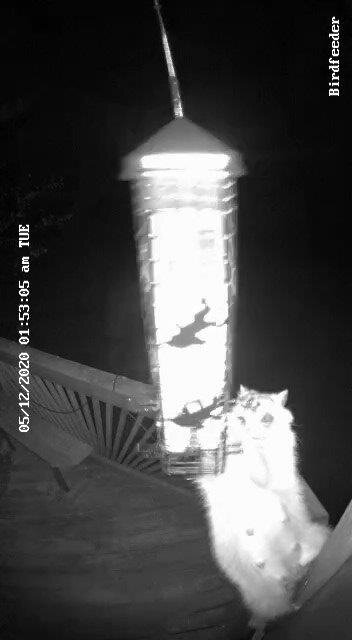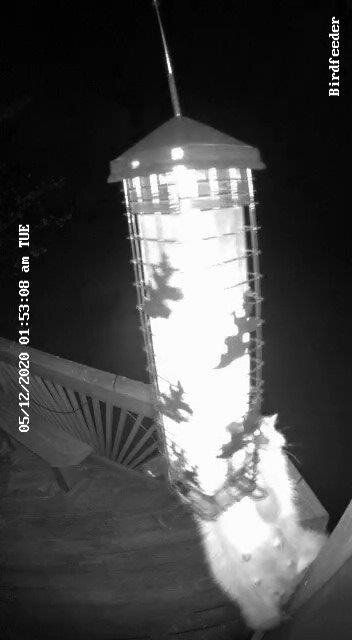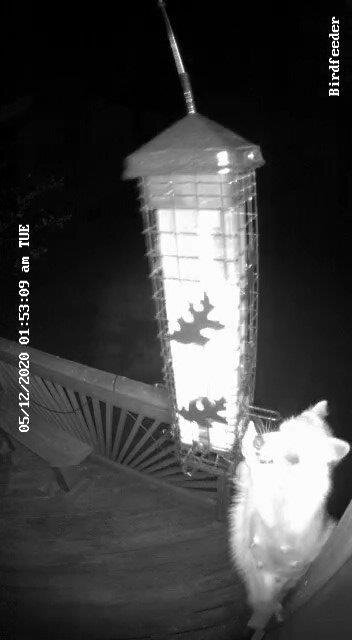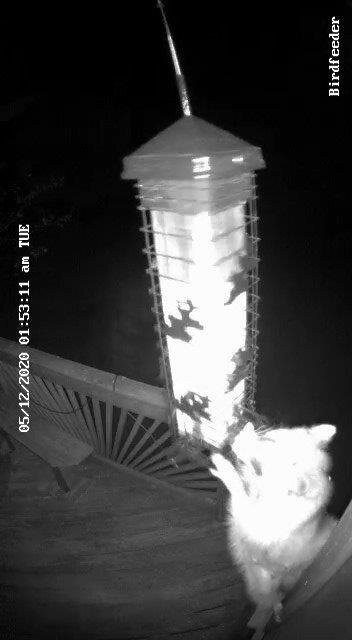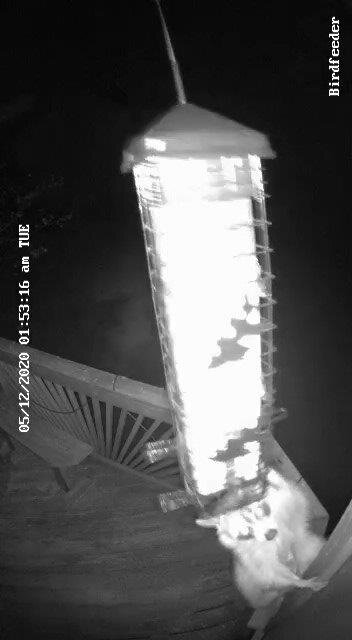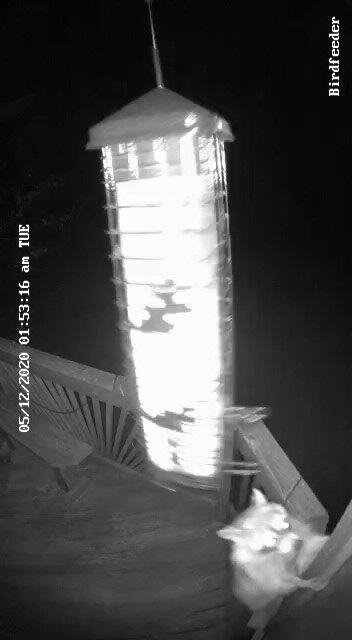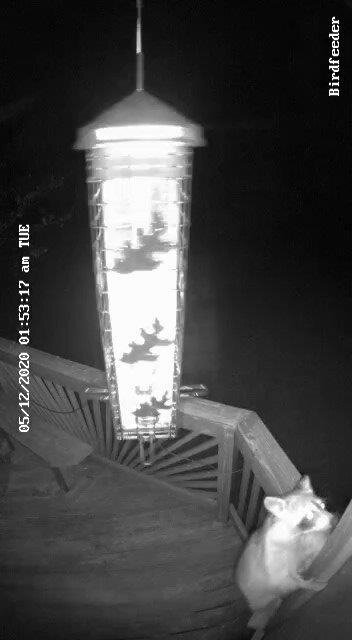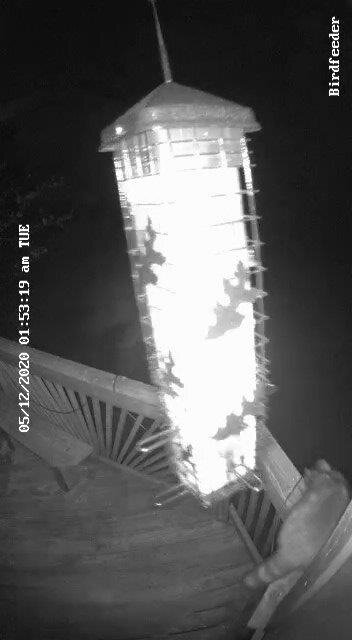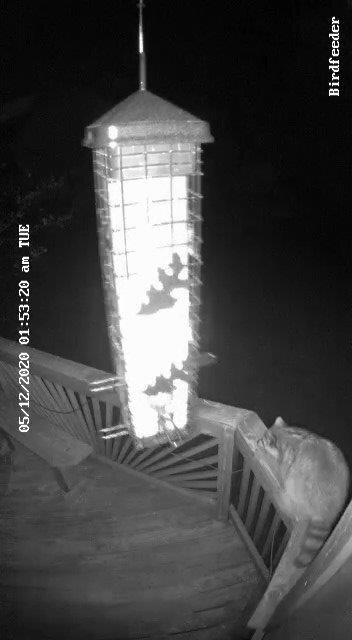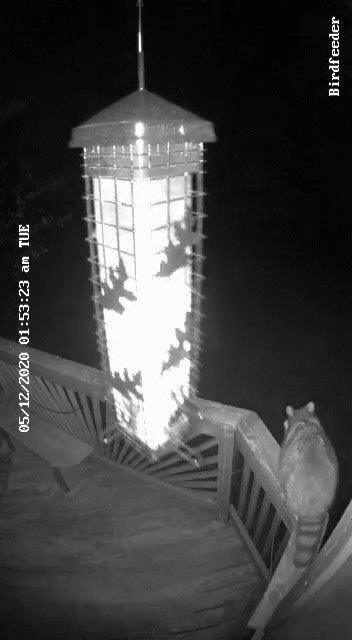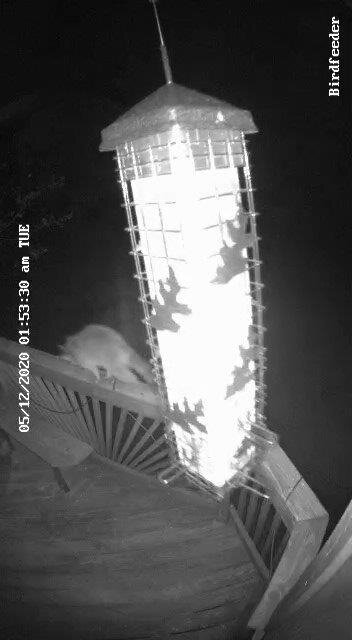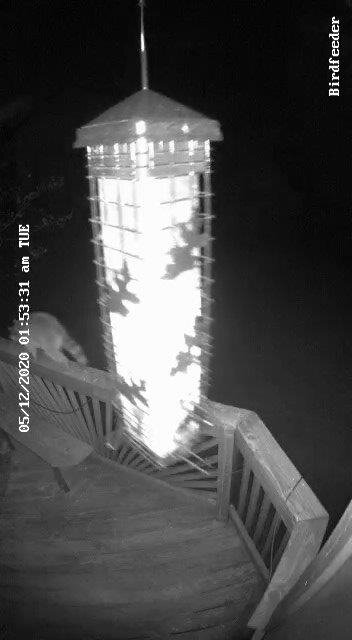Weekly Gleanings, Racoon Visits and Rearranging Office
/Continuing the blog post series prompted by COVID-19….
(I’m still social distancing/staying at home as much as possible….but am changing the title of the blog posts to reflect the accumulation of topics in the posts. I’m tired of only the date changing in the title since March 15th, 2020)
Here are the unique activities for yesterday:
Racoon in early morning of 5/12…and then on 5/15! I was downloading the birdfeeder cam videos and noticed right away that there was an odd one just before 2 AM on 5/12….it was a racoon! It was a female probably hungry because she has babies still in the den – too young to eat on their own. It didn’t appear that she got anything from our feeder.
We had another racoon visit on the 15th just after 2 AM. I couldn’t tell if it was a female or not. It could have been another racoon or the same one giving it another try. The animal used a different strategy to get the seed coming at the feeder from above rather than below….but the strategy didn’t work. It looks longingly at the feeder from the bench on the deck before it leaves.
Rearranging my office. It’s a work in progress. The room has been my office since we moved into the house in November 1994 – and it’s the best room in the house for an office because it looks out to trees. I bought the three-piece computer office tables from IKEA as we moved in and had them connected in an L until about 9 years ago when I wanted better access to the windows. I detached the longer table from the corner piece at that point. Then I detached the shorter table about a year ago so I could use the whole surface area of the corner piece…and now I’ve moved the small table by the window but pulled out a bit. When I am sitting at the small table, I have a clear view of the bird feeder. We’ll see how it works. I might not like it in the afternoon when the sun shines in and I need to close the curtains to keep the room from heating up.
Links to my previous “filling a day of social distance” posts here.
And now for the gleanings from my news feeds during this past week….
The items below were ‘the cream’ of the articles and websites I found this past week. Click on the light green text to look at the article.
Check Out the Beautiful Flowers in Bloom at the Keukenhof – I missed going to Brookside Gardens this spring. I’m glad there are beautiful photographs like these and that we have the forest behind our house.
Researchers Reexamine Ritual Sacrifices in Ancient Mesoamerica - Archaeology Magazine – Evidently there is skeletal evidence that there were 3 distinct methods used for heart extractions.
Researchers Uncover New Evidence That Warrior Women Inspired Legend of Mulan | Smart News | Smithsonian Magazine – Not specifically Mulan but there is physical evidence that female warriors road across the steppes of what is now Mongolia around the 4th or 5th century AD which is about the time the first historical mention of Mulan appears.
Dolphins, Surfers and Waves Sparkle in Bright Blue Bioluminescent Glow Off California Coast | Smart News | Smithsonian Magazine – Dinoflagellates. Watch the two videos.
Top 25 birds of the week: Birds of Prey - Wild Bird Revolution – This group includes a Snail Kite – which we saw in Florida a little over a year ago. (I posted about it too!)
Nearly half of US breathing unhealthy air; record-breaking air pollution in nine cities -- ScienceDaily – I was surprised at some of the cities listed on the top 10 most polluted cities (short term particle pollution)…and the comparison of that list with the year-round list was interesting.
Cool Facts About Common Backyard Wildlife – The list includes racoons. Evidently racoons are usually very clever about accessing urban/suburban food sources. So far – the design of our bird feeder is working…frustrating the racoon.
Infographic: Building Bacteria to Fight Cancer | The Scientist Magazine® - Work being done in mice at this point…goal is to target tumors specifically and minimize side effects of treatment.
Paleontologists reveal 'the most dangerous place in the history of planet Earth' -- ScienceDaily – 100 million years ago the Sahara had flying reptiles and crocodile-like hunters!
Great Lakes Without Winter Ice – A picture taken from the International Space Station in February.

